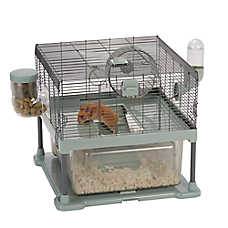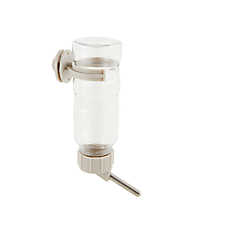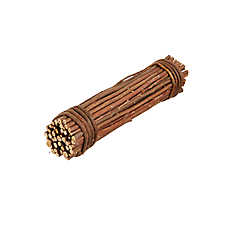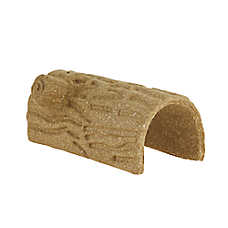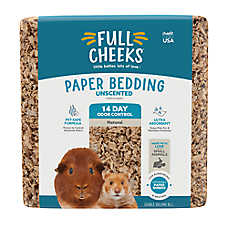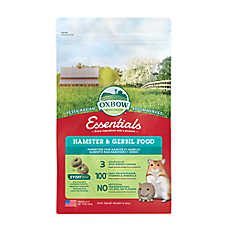Gerbil Care Guide
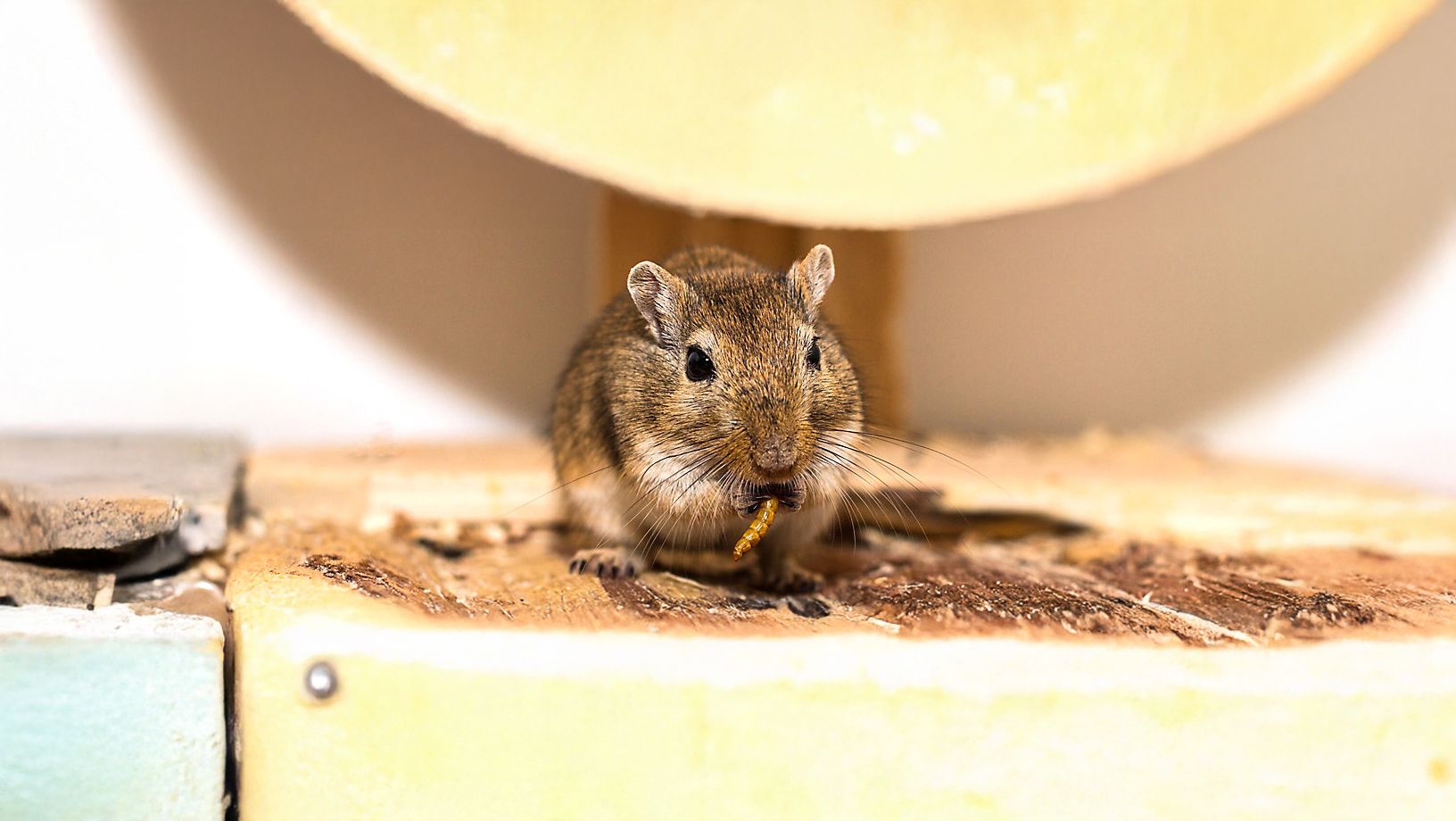
In this Article
Friendly & Gentle Gerbils!
In the world, there are currently 15 different known species of gerbil. In the pet trade, the Mongolian gerbil is the most common and popular. These desert-dwelling rodents are native to drier regions of Mongolia and Northern China, where they spend their time in elaborately built burrows and tunnels. Inquisitive by nature, gerbils make great additions to the family as they’re usually easy to handle and, by rodent standards, they’re relatively clean pets!
Species Profile:
Scientific/Common Name: Mongolian Gerbil (Meriones unguiculatus)
- Size: Gerbils average about 3-6” in length, not including their tail
- Lifespan: Gerbils live for about 3 to 4 years.
- Behavior: Gerbils are nocturnal and most active during the night. They tend to be curious and friendly.
- Temperament: They are typically docile with humans, and rarely bite. Gerbils can live in pairs, but we recommend same-sex pairs to avoid unwanted pregnancies. It should be noted that gerbils are easier to introduce to each other when young, or by adopting an established pair together at the same time. Adult gerbils, regardless of sex, who have not previously met have a much higher likelihood of fighting, and may prefer to be housed by themselves . If you introduce your pet gerbil to another gerbil later in life, use caution and observe them carefully, while being prepared to intervene should a fight break out.
Handling note: Gerbils move quickly and have a penchant for jumping, so it is recommended to support them fully in your hand and hold them close to your body to help maintain control. Never grab your gerbil by the tail as the skin on the tail is very delicate and can be easily torn if grabbed. This is called “tail slip” and your gerbil should see a vet if this happens.
Setting up your Gerbil habitat
Gerbils like having multiple levels to their habitat, allowing them lots of vertical room to explore. Adding a hide to each level gives your gerbil options about where they’d like to spend their time, and may also help reduce chances of your gerbils fighting for resources.
Choosing the right gerbil enclosure
Size and setup:
- House your gerbil in a cage that's at least 20"x20"x12" or larger, and has multiple levels
- Don't forget to attach the ramps between levels and make sure all pieces are secure and sturdy
- Place the habitat out of direct sunlight and in a low-humidity area (around 50%) between 65-75°F (18-23.5°C)
Gerbil bedding and cleaning
Bedding depth:
- Line the floor of the habitat with about 3-6" of bedding
Safe bedding options:
- Safe bedding includes shredded non-inked paper bedding, hardwood shavings, wood pulp bedding and recycled newspaper bedding
- Avoid pine, cedar and corn cob for bedding
Cleaning schedule:
- Spot clean bedding as needed
- Fully change out the bedding and deep clean the cage and its contents every 2 weeks
Sand bath setup for gerbils
In lieu of traditional water baths, gerbils use sand to clean themselves, just like chinchillas! Dust/Sand baths are great enrichment and fun to watch too. Sand baths should be offered 2-3 times a week. For a sand bath dish or tub, you can use a small receptacle approximately 2-3 inches deep and 6-8in wide and fill it with clean specialty bathing sand. Don't use yard dirt or sand as it could be contaminated from wild animals passing through.
Gerbil habitat essentials
Enrichment items:
- Insert your enrichment! Place your exercise wheel, your chew(s), hides and nesting material
Exercise wheel safety for gerbils
Avoid using a wire or slatted exercise wheel. Instead, opt for a solid wheel. Wire or slotted wheels carry a risk of your gerbil getting their leg caught between the slats and can be seriously injured. Solid wheels eliminate this risk and can be easier to clean as you don't have to get into as many nooks and crannies.
Feeding your Gerbil
Gerbils are omnivores in the wild and eat a variety of foods including seeds, nuts, plant vegetation and insects. Gerbil pellets provide well balanced nutrition for your pet, but are not the only thing your gerbil will need.
Daily gerbil diet staples
Pelleted food:
- A pelleted gerbil diet is the most complete diet option for your pet
- This should be available 24/7, and the bowl refreshed daily
Fresh vegetables for gerbils
Every other day feeding:
- Fresh vegetables should be offered every other day in addition to the pelleted diet to increase variety into the diet as well as to help supplement hydration
Safe vegetable options:
- Safe vegetables include: cabbage, kale, squash, carrots, beets, and soaked sprouts
Treats and fruit for gerbils
Weekly treats:
- Fruit can be offered once a week as a treat
- Treats should be limited to help prevent risk of obesity
Safe fruit options:
- Safe fruits include: apples, melons, berries, oranges, pears, and bananas
Alfalfa hay for gerbils
Added variety:
- Alfalfa hay can also be offered as enrichment to graze on and to add variety to their diet
Understanding gerbil teeth
Many rodents, including gerbils, have front teeth that keep growing their entire life. These are called "hypsodont" teeth and, unlike human teeth, hypsodont teeth will continually grow longer and longer.
In addition to regular feedings, gerbils need things to gnaw on, like wood chew sticks, to keep their teeth at an appropriate length so they can chew and eat normally and without pain. If you notice your pet is having difficulty eating, you may want to have a vet evaluate their teeth to make sure they're not overgrown.
Gerbil hydration
Water access:
- A water bottle attached to the side of the cage should be available at all times and refreshed daily
When to see a vet
In addition to regularly scheduled appointments, contact your small animal veterinarian if you notice the following signs:
- cloudy, sunken or swollen eyes
- wheezing
- sneezing; discharge from the eyes, nose or mouth
- overgrown front teeth
- drooling
- inability to close mouth, food falling from mouth frequently
- not eating
- bare patches in the fur
- sores or swelling/changes to the feet
- weight loss; not eating or drinking normally
- diarrhea or discolored droppings
SHOPPING CHECKLIST
- Solid-floored habitat or pen sized 20”x20”x12”or larger (multilevel home preferred)
- Soft, non-abrasive litter/bedding
- Nesting material
- exercise wheel (solid, not slatted/wire)
- hide
- food dish
- water bottle
- pelleted gerbil food
- hay
- treats
- Toys and wood chews
- Bathing sand
FAQs
Can I house multiple gerbils together?
Gerbils can live in pairs, but we recommend same-sex pairs to avoid unwanted pregnancies. It should be noted that gerbils are easier to introduce to each other when young, or by adopting an established pair together at the same time. Adult gerbils, regardless of sex, who haven't previously met have a much higher likelihood of fighting, and may prefer to be housed by themselves. If you introduce your pet gerbil to another gerbil later in life, use caution and observe them carefully, while being prepared to intervene should a fight break out.
What temperature is safe for my gerbil?
Keep your gerbil's habitat in a low-humidity area (around 50%) between 65-75°F (18-23.5°C), and out of direct sunlight. This temperature range helps keep your gerbil comfortable and healthy.
How often should I give my gerbil a sand bath?
Sand baths should be offered 2-3 times a week. Use a small receptacle approximately 2-3 inches deep and 6-8in wide and fill it with clean specialty bathing sand. Don't use yard dirt or sand as it could be contaminated from wild animals passing through.
What type of exercise wheel is safest for my gerbil?
Avoid using a wire or slatted exercise wheel. Instead, opt for a solid wheel. Wire or slotted wheels carry a risk of your gerbil getting their leg caught between the slats and can be seriously injured. Solid wheels eliminate this risk and can be easier to clean as you don't have to get into as many nooks and crannies.
What should I feed my gerbil daily?
A pelleted gerbil diet is the most complete diet option for your pet. This should be available 24/7, and the bowl refreshed daily. Fresh vegetables should be offered every other day in addition to the pelleted diet to increase variety and help supplement hydration. Safe vegetables include: cabbage, kale, squash, carrots, beets, and soaked sprouts.
Can I give my gerbil fruit?
Yes, fruit can be offered once a week as a treat. Safe fruit options include: apples, melons, berries, oranges, pears, and bananas. Treats should be limited to help prevent risk of obesity.
How do I know if my gerbil's teeth are overgrown?
If you notice your pet is having difficulty eating, you may want to have a vet evaluate their teeth to make sure they're not overgrown. Gerbils need things to gnaw on, like wood chew sticks, to keep their continuously growing teeth at an appropriate length so they can chew and eat normally and without pain.
How should I handle my gerbil safely?
Gerbils move quickly and have a penchant for jumping, so it's recommended to support them fully in your hand and hold them close to your body to help maintain control. Never grab your gerbil by the tail as the skin on the tail is very delicate and can be easily torn if grabbed. This is called "tail slip" and your gerbil should see a vet if this happens.
Why does my gerbil need multiple levels in their habitat?
Gerbils like having multiple levels to their habitat, allowing them lots of vertical room to explore. These desert-dwelling rodents naturally spend their time in elaborately built burrows and tunnels. Adding a hide to each level gives your gerbil options about where they'd like to spend their time, and may also help reduce chances of your gerbils fighting for resources.
©2025 PetSmart LLC Vet Assured™: Pets purchased at PetSmart are part of our exclusive Vet Assured™ program, designed by PetSmart veterinarians to help improve the health and well-being of our pets. Our vendors meet a high standard in caring for pets and screening them for common illnesses. This program also includes specific standards for in-store pet care.
The PetSmart Promise: If your pet becomes ill during the initial 14-day period, or if you’re not satisfied for any reason, PetSmart will gladly replace the pet or refund the purchase price.
This care guide contains general information for the proper care of your pet, but is not comprehensive and is not a substitute for veterinary advice or care. PETSMART and VET ASSURED are trademarks of PetSmart Home Office, Inc. © 2025 PetSmart. All rights reserved.
The PetSmart Promise: If your pet becomes ill during the initial 14-day period, or if you’re not satisfied for any reason, PetSmart will gladly replace the pet or refund the purchase price.
This care guide contains general information for the proper care of your pet, but is not comprehensive and is not a substitute for veterinary advice or care. PETSMART and VET ASSURED are trademarks of PetSmart Home Office, Inc. © 2025 PetSmart. All rights reserved.
